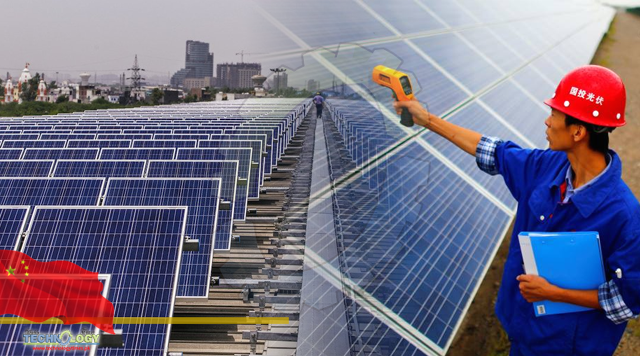China leads the world in the number of research papers published on green tech related to the global pivot away from greenhouse gases, and is catching up to the US in terms of the quality and impact, a Nikkei survey shows.

China Leads World In Cutting-Edge Green Tech Research, Survey Shows : China produced more papers than any other country in 16 of the 18 research areas examined, including solar cells and artificial photosynthesis, in Dutch publisher Elsevier’s database of more than 82 million articles across 7,000-plus journals between 2015 and 2020.
The study showed a research landscape dominated by China and the US, as decarbonisation becomes a battleground for the world’s two biggest economies vying for technological supremacy.
China enjoyed a particularly strong lead in fields related to battery storage, seen as crucial to widespread use of renewable energy.
The database included more than three times as many papers on lithium-ion batteries from China as from the US, and five to six times as many on sodium-ion and potassium-ion batteries, which show promise as cheaper next-generation options.
China also had double the US tally for papers on solar cells, and triple the number on cells using perovskites, materials that can be simply painted onto a surface and heated to turn it into a low-cost cell.
Electric vehicles, a popular area for research, had China — the world’s largest market for them — with a commanding lead as well.
Of the 18 fields examined, American researchers led only in geothermal power and energy-saving semiconductors, and even then the margins were thin.
In terms of research quality — calculated based on the number of times papers were cited, taking into account factors including the year of publication and the type of paper — the US led China overall and topped the global average in each of the individual research areas.
But China’s research was nothing to sneeze at on this front, meeting or exceeding the average in most fields and even beating the US in artificial photosynthesis and biomass energy.
Japan made a solid showing in several areas, ranking third in terms of quantity in artificial biosynthesis, fuel cell vehicles and ammonia and fourth in energy-saving semiconductors and perovskite cells. But it lagged far behind in renewable power generation in particular, falling outside the top 10 in wind, hydroelectric and geothermal power.
The country has fared better with patents. Materials from Japan’s Ministry of Economy, Trade and Industry on decarbonisation technology show Japan as the world leader in patents in hydrogen and in autos and batteries, among other areas, which has helped keep its automakers competitive. But China loomed large here as well, ranking second in several of those categories.
The Chinese government budgeted about US$250 billion in 2018 to support research at state research organisations, universities and other institutions, according to Japan’s National Institute of Science and Technology Policy. It far outpaces the US, which is the world’s second-largest spender and budgeted roughly US$140 billion in 2019.
Cutting-edge research and development is a key contributor to industrial development. For example, the first scientific papers on lithium-ion batteries were published in the 1980s.
The technology became ubiquitous by the 2000s after years of research, though companies that became involved in the field early on remain important players in the industrial sector.
Japan was second only to the US in the number of papers in the natural sciences at one point in the 1990s but struggled to leverage the findings into a lasting industrial advantage.
Governments need to ensure that scientific breakthroughs at universities and other institutions are shared with the business sector.
Originally published at Free Malaysia today